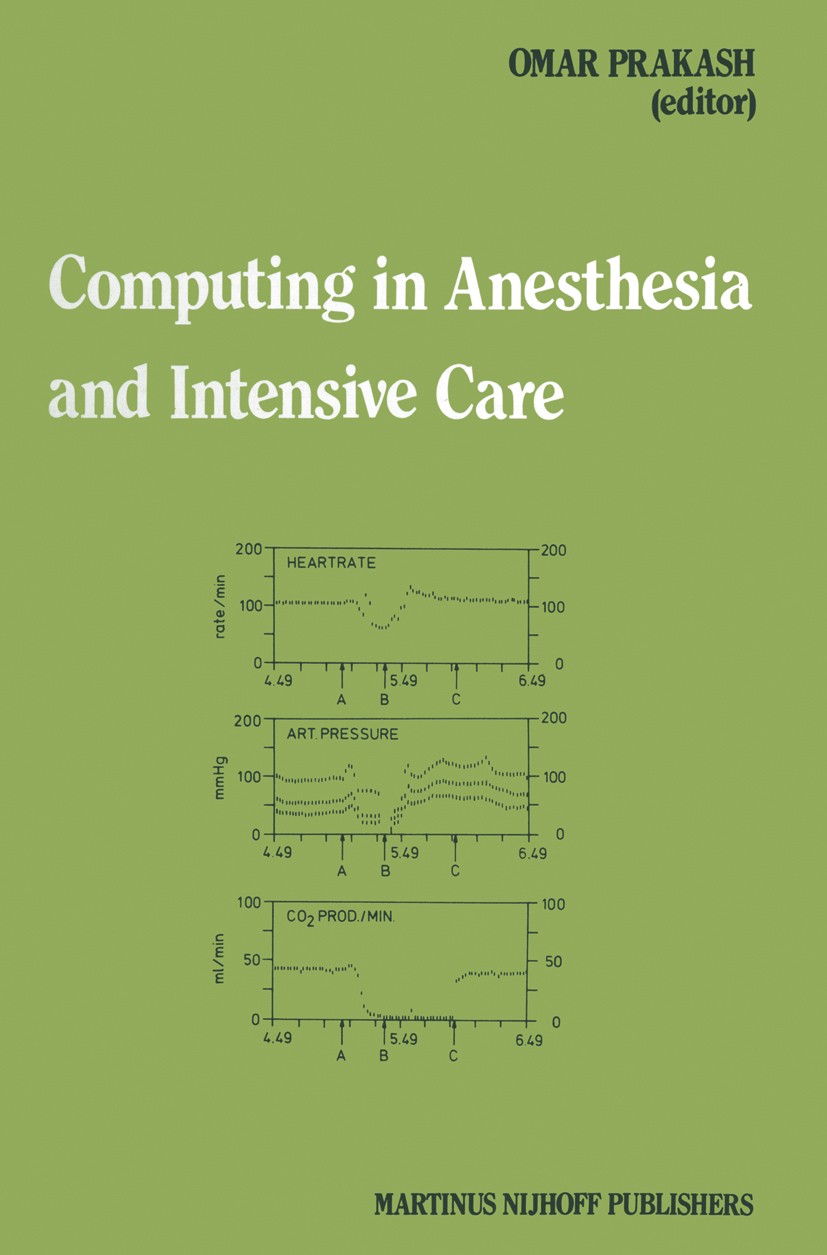| 书目名称 | Computing in Anesthesia and Intensive Care |
| 编辑 | Omar Prakash |
| 视频video | http://file.papertrans.cn/235/234805/234805.mp4 |
| 丛书名称 | Developments in Critical Care Medicine and Anaesthesiology |
| 图书封面 |  |
| 描述 | There is a tendency of an increasing number of signals and derived variables to be incorporated in the monitoring of patients during anesthesia and in intensive care units. The addition of new signals hardly ever leads to thedeletion of other signals. This is probably based on a feeling of insecurity. We must realize that each new signal that is being monitored brings along its cost, in terms of risk to the patient, investment and time. It is therefore essential to assess the relative contribution of this new signal to the quality of the monitoring process; i. e. given the set of signals already in use, what is the improvement when a new signal is added? Beyond a certain point the addition of new information leads to new uncertainty and degrades the result (Ream, 1981) In the diagnostic process, it is possible to evaluate "result" in an objective, qualitative way. The changes in the sensitivity and specificity of the diagnosis as a result of the addition or deletion of a certain variable can be calculated on the basis of false negative, false positive, correct negative and false negative scores. Different methods for multiple regression analysis have been implemented on computers ( |
| 出版日期 | Book 1983 |
| 关键词 | Elektroenzephalografie; Infusion; Monitor; intensive care medicine; surgery |
| 版次 | 1 |
| doi | https://doi.org/10.1007/978-94-009-6747-2 |
| isbn_softcover | 978-94-009-6749-6 |
| isbn_ebook | 978-94-009-6747-2Series ISSN 0924-5294 |
| issn_series | 0924-5294 |
| copyright | Martinus Nijhoff Publishers, Boston 1983 |
 |Archiver|手机版|小黑屋|
派博传思国际
( 京公网安备110108008328)
GMT+8, 2025-11-15 15:18
|Archiver|手机版|小黑屋|
派博传思国际
( 京公网安备110108008328)
GMT+8, 2025-11-15 15:18


